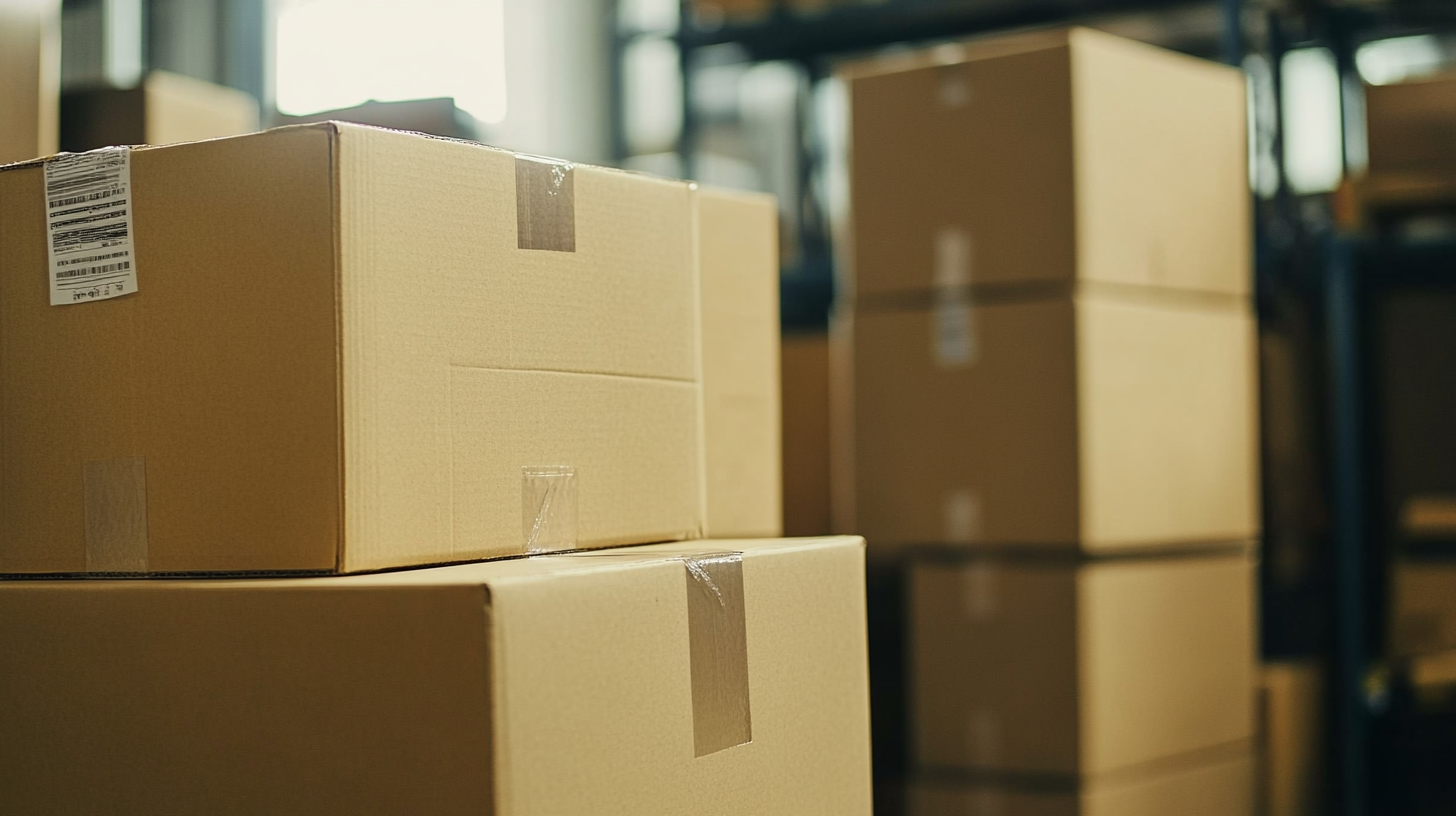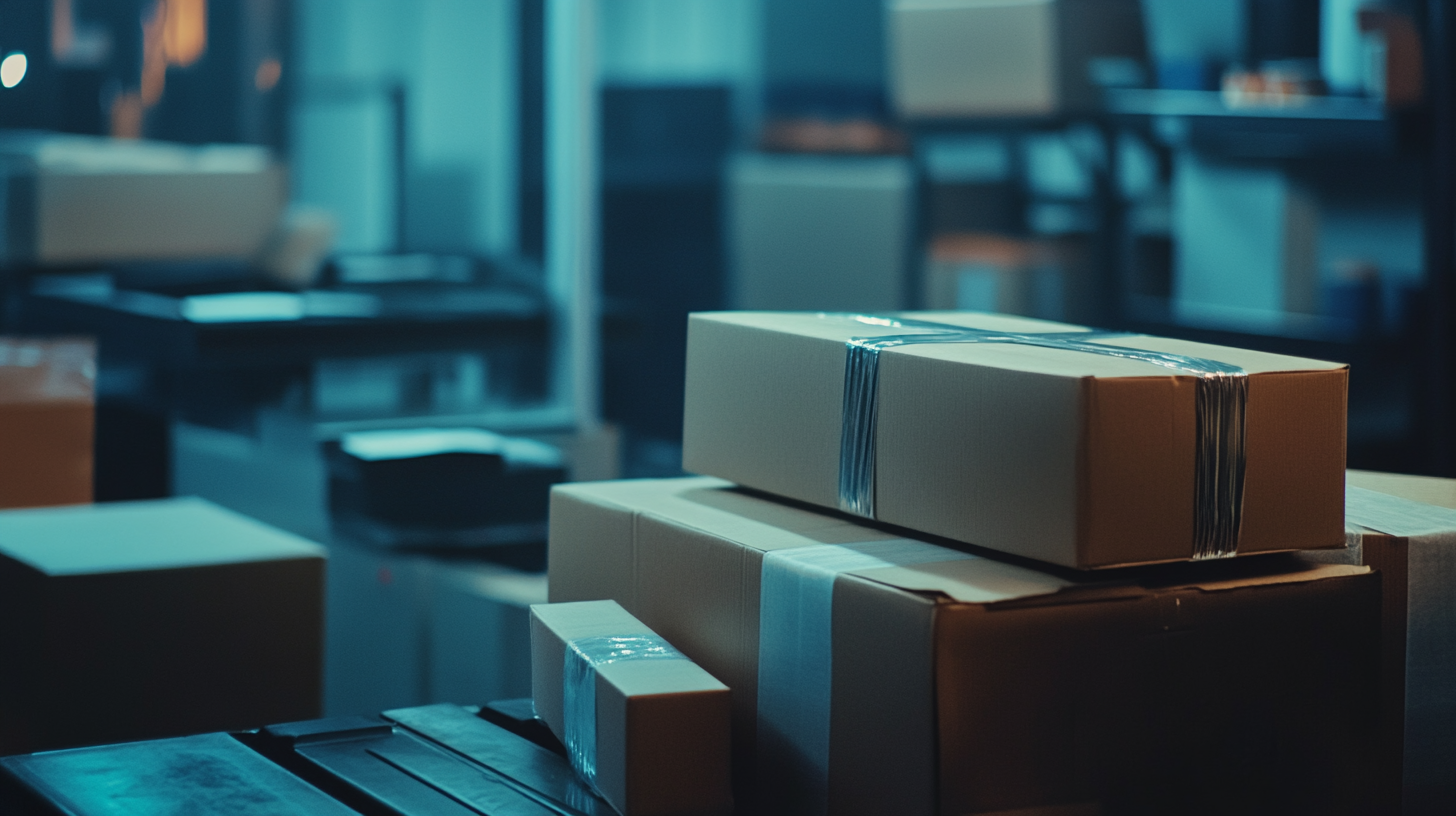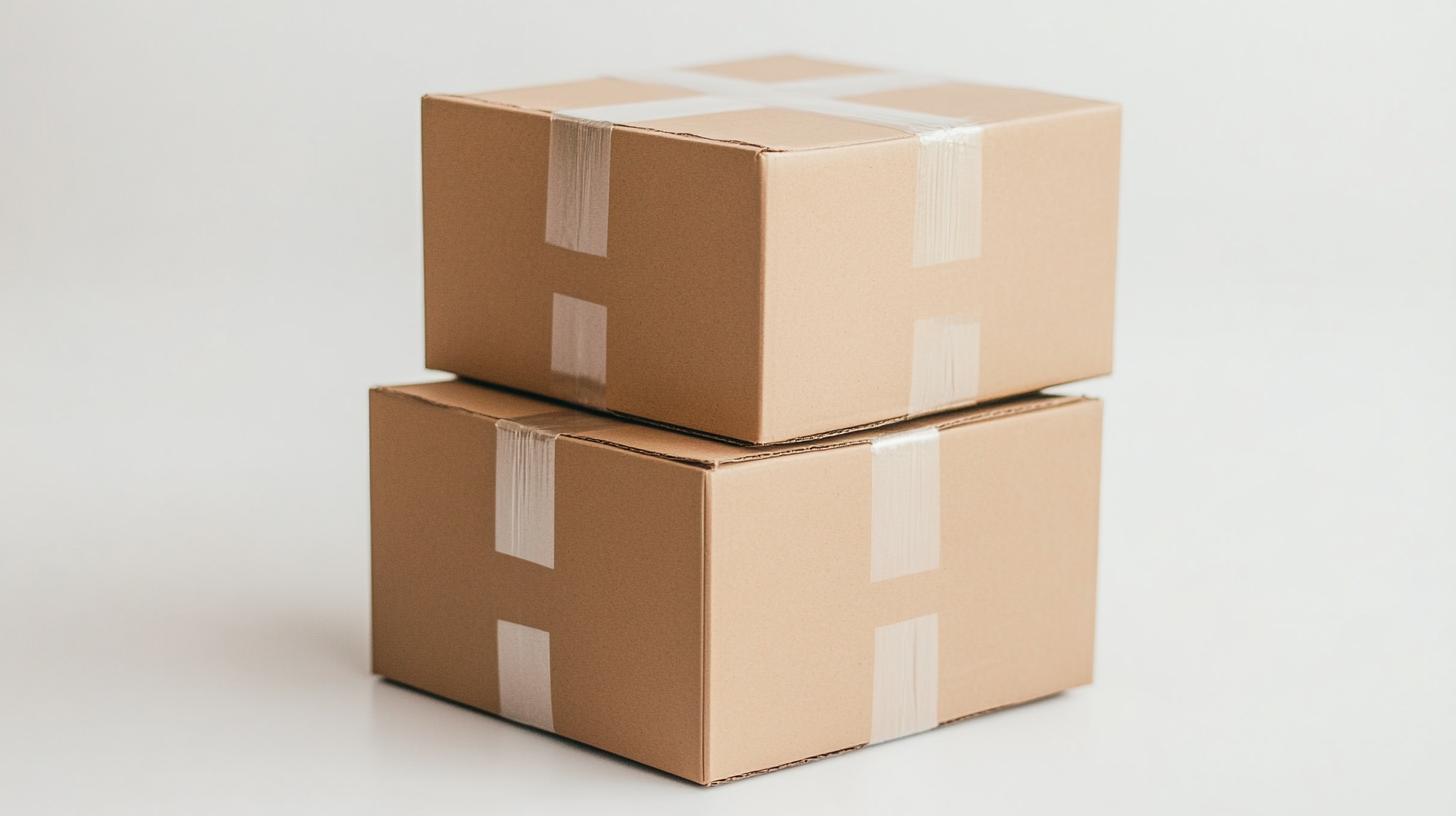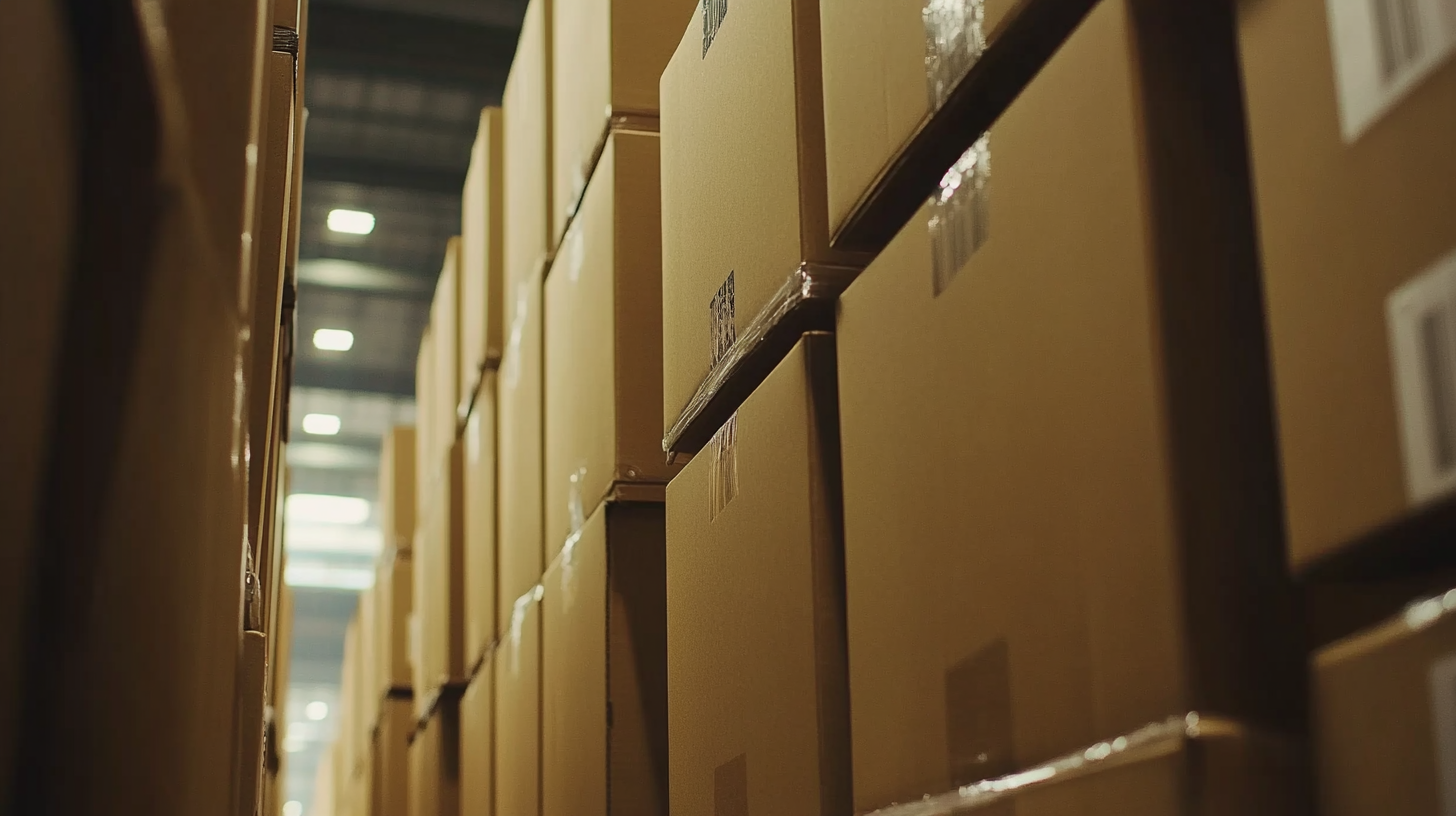A-B-C Blog
Advantages of Using Box Taping Machines for Efficient Packaging Solutions
In the fast-paced world of logistics and manufacturing, efficiency is paramount to maintaining competitive advantage. A recent report from the Packaging Machinery Manufacturers Institute (PMMI) highlights that the use of automated packaging solutions, including the Box Taping Machine, has increased productivity by over 30% in many operations. As companies strive to enhance their packaging processes, the need for reliable and efficient equipment becomes essential. The Box Taping Machine not only automates the sealing of boxes but also ensures consistency and reduces the likelihood of errors, ultimately streamlining the entire packaging operation.
Furthermore, a study by Freedonia Group reveals that the global demand for packaging machinery is projected to reach $47 billion by 2025, with automated systems like the Box Taping Machine playing a significant role in this growth. Businesses are increasingly recognizing the importance of integrating innovative technology into their packaging processes to meet the rising demands for speed and accuracy. By adopting a Box Taping Machine, companies can significantly cut labor costs, minimize material waste, and enhance the overall efficiency of their packaging solutions, thus reinforcing their position in an increasingly competitive marketplace.

Benefits of Automated Box Taping Machines for Streamlined Operations
The adoption of automated box taping machines has emerged as a significant advancement in packaging solutions, particularly for industries that rely on efficiency and accuracy in their operations. A recent market analysis indicates that the global automatic carton erector market is expected to reach USD 5 billion by 2026, driven by increased demand for automated packaging processes in various sectors including e-commerce, food and beverage, and pharmaceuticals. Automated box taping machines play a crucial role in optimizing workflow. By reducing the time spent on manual taping, these machines not only increase productivity but also minimize labor costs. According to a report from Allied Market Research, companies that implemented automation in their packaging lines have experienced up to a 50% reduction in operational time, enabling businesses to meet growing consumer demands swiftly. Integrating automated box taping machines into packaging operations enhances consistency and reduces the likelihood of errors. A study by Technavio highlights that companies utilizing automated solutions report a decrease in material waste by as much as 30%. This efficiency not only translates to cost savings but also supports sustainability efforts, making automated packaging solutions a compelling choice in today’s market. Such advancements clearly demonstrate how automation can revolutionize traditional processes, propelling businesses toward more streamlined and effective operational models.

Enhancing Packaging Speed: The Role of Taping Machines in Efficiency
In today’s fast-paced packaging industry, the need for speed and efficiency is paramount. Box taping machines have emerged as essential tools that significantly enhance packaging speed, allowing businesses to meet growing demands without compromising quality. By automating the taping process, these machines eliminate the bottlenecks often caused by manual operations, ensuring that packages are sealed securely and swiftly.
One of the key benefits of using taping machines is their ability to handle high volumes of packaging consistently. Modern machines are designed to accommodate various box sizes and types, making them versatile solutions for warehouses and distribution centers. With features such as adjustable tape lengths and automatic feed systems, businesses can streamline their packing processes, reducing the time spent on each package while maintaining a high standard of output.
Moreover, the integration of taping machines contributes to overall efficiency by minimizing labor costs and reducing the risk of human error. Workers can focus on more critical tasks within the packaging line, such as quality control or inventory management, while the machines take care of the repetitive and time-consuming task of sealing boxes. This shift not only boosts productivity but also fosters a safer working environment, as the physical strain of manual taping is alleviated.

Cost-Effectiveness: How Box Taping Machines Save Money Over Time
The cost-effectiveness of box taping machines is a significant consideration for businesses looking to optimize their packaging processes. According to a report by the Packaging Machinery Manufacturers Institute (PMMI), automated packaging solutions can reduce labor costs by up to 30%. This is particularly advantageous in high-volume environments where manual sealing may lead to inconsistencies and increased operational costs. By investing in a box taping machine, companies can improve efficiency, minimize material wastage, and streamline their overall workflow.
Moreover, box taping machines can enhance the speed of packaging operations, which translates directly into increased productivity and revenue potential. A study published by Freedonia Group highlights that automated packaging systems can accelerate production by as much as 50% compared to manual methods. This efficiency not only allows for higher throughput but also results in reduced overtime labor costs, which can further save the company money over time.
Additionally, the durability and reliability of box taping machines lead to lower maintenance and replacement costs. Machines designed with advanced technology can withstand rigorous use and ensure uniform sealing, significantly decreasing the chances of product damage during transport. A well-sealed package reduces the likelihood of product returns due to damage by nearly 20%, according to a recent analysis by the International Journal of Logistics Management. Thus, the long-term investment in box taping machines proves to be financially sound, contributing to overall cost savings and operational efficiency.

Improved Consistency and Quality in Packaging with Taping Solutions
In an era where efficiency and quality are paramount, the adoption of box taping machines has transformed the packaging industry. One of the prominent benefits of these machines is their ability to improve consistency and quality in packaging processes. According to a report by the Freedonia Group, the demand for automated packaging equipment is projected to increase by 6% annually, highlighting the growing need for precision and reliability in packaging operations. With box taping machines, companies can achieve uniform tape application across numerous packages, significantly reducing errors associated with manual taping.
The advancement in technology has led to taping solutions equipped with sensors and automated adjustments, ensuring that every box is sealed securely and uniformly. Statistics from a recent case study by Packaging World indicate that businesses utilizing taping machines experience up to a 30% reduction in packaging errors. This consistency is vital, especially in high-volume production environments where variations in tape application can lead to compromised product safety and increased return rates.
Moreover, the integration of advanced taping machines can enhance overall packaging quality. Automated systems reduce the risk of human errors, which are prevalent in manual processes. As per a report by MarketsandMarkets, the automated packaging market is anticipated to reach $72.6 billion by 2024, signifying a shift towards solutions that not only improve productivity but also maintain high standards of quality. By leveraging these advanced taping solutions, companies are not just streamlining their operations but are also ensuring that their products reach consumers in optimal condition.
Ergonomics and Safety: The Impact of Taping Machines on Worker Well-Being
The use of box taping machines has transformed the packaging industry, not only enhancing efficiency but also contributing significantly to worker well-being. Traditional taping methods require repetitive motions that can lead to musculoskeletal disorders, a concern frequently highlighted in studies, such as the recent review on musculoskeletal disorders in agriculture. These conditions can greatly impact a worker's health and productivity, underscoring the importance of ergonomics in the workplace.
By implementing automated taping machines, companies can reduce the physical strain placed on employees. These machines are designed to minimize repetitive tasks, allowing operators to maintain a more neutral posture and avoid the fatigue associated with manual taping. This shift not only helps in preventing workplace injuries but also fosters a more comfortable work environment, which can enhance overall job satisfaction and morale.
Moreover, the integration of taping machines can lead to a safer workplace. With less manual handling, the risk of accidents related to improper lifting or awkward movements is diminished. Organizations can focus on creating a more efficient workflow, all while prioritizing the health and safety of their workforce. Ultimately, the adoption of box taping machines represents a proactive approach to ergonomics, demonstrating that efficiency and worker well-being can go hand in hand.







